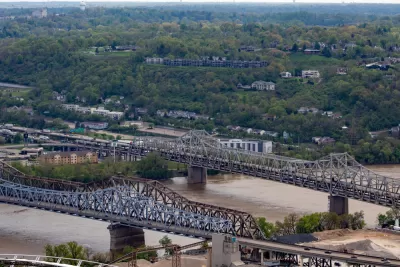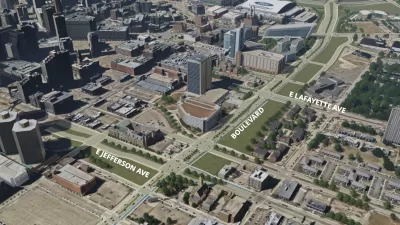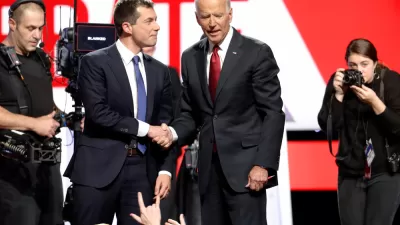The Biden administration this week spanned the country to announce over $2 billion in grant funding for bridge projects.

The Biden administration announced $2 billion in funding for bridges around the country this week, made possible by the Infrastructure Investment and Jobs Act (IIJA).
The president made the announcement on Wednesday at the Brent Spence Bridge—a crucial connection over the Ohio River between Covington, Kentucky and Cincinnati, Ohio and the recipient of $1.6 billion in funding. Other members of the Biden administration attended events coinciding with the new bridge grants in San Francisco, Chicago, and New London (Connecticut).
The news about the $1.6 billion in funding for the Brent Spence Bridge broke last week, with sources around the internet reporting the source for the funding as the MEGA grant program for large regional projects. A Tuesday press release from the White House, however, credited the funding to the first year of grant awards from the Large Bridge Project Grants from the IIJA’s Bridge Investment Program.
“Other DOT programs funded by the [Infrastructure Investment and Jobs Act] have also made significant investments in bridge repair and replacement,” according to the press release. “Beyond the Bridge Investment Program awards announced today, the US Department of Transportation (DOT) has announced over $11 billion to upgrade the nation’s bridges.”
More news about the improvements planned for the Brent Spence Bridge on the Ohio River can be found at the Cincinnati Enquirer.

Study: Maui’s Plan to Convert Vacation Rentals to Long-Term Housing Could Cause Nearly $1 Billion Economic Loss
The plan would reduce visitor accommodation by 25,% resulting in 1,900 jobs lost.

North Texas Transit Leaders Tout Benefits of TOD for Growing Region
At a summit focused on transit-oriented development, policymakers discussed how North Texas’ expanded light rail system can serve as a tool for economic growth.

Why Should We Subsidize Public Transportation?
Many public transit agencies face financial stress due to rising costs, declining fare revenue, and declining subsidies. Transit advocates must provide a strong business case for increasing public transit funding.

How to Make US Trains Faster
Changes to boarding platforms and a switch to electric trains could improve U.S. passenger rail service without the added cost of high-speed rail.

Columbia’s Revitalized ‘Loop’ Is a Hub for Local Entrepreneurs
A focus on small businesses is helping a commercial corridor in Columbia, Missouri thrive.

Invasive Insect Threatens Minnesota’s Ash Forests
The Emerald Ash Borer is a rapidly spreading invasive pest threatening Minnesota’s ash trees, and homeowners are encouraged to plant diverse replacement species, avoid moving ash firewood, and monitor for signs of infestation.
Urban Design for Planners 1: Software Tools
This six-course series explores essential urban design concepts using open source software and equips planners with the tools they need to participate fully in the urban design process.
Planning for Universal Design
Learn the tools for implementing Universal Design in planning regulations.
Ascent Environmental
Borough of Carlisle
Institute for Housing and Urban Development Studies (IHS)
City of Grandview
Harvard GSD Executive Education
Toledo-Lucas County Plan Commissions
Salt Lake City
NYU Wagner Graduate School of Public Service





























